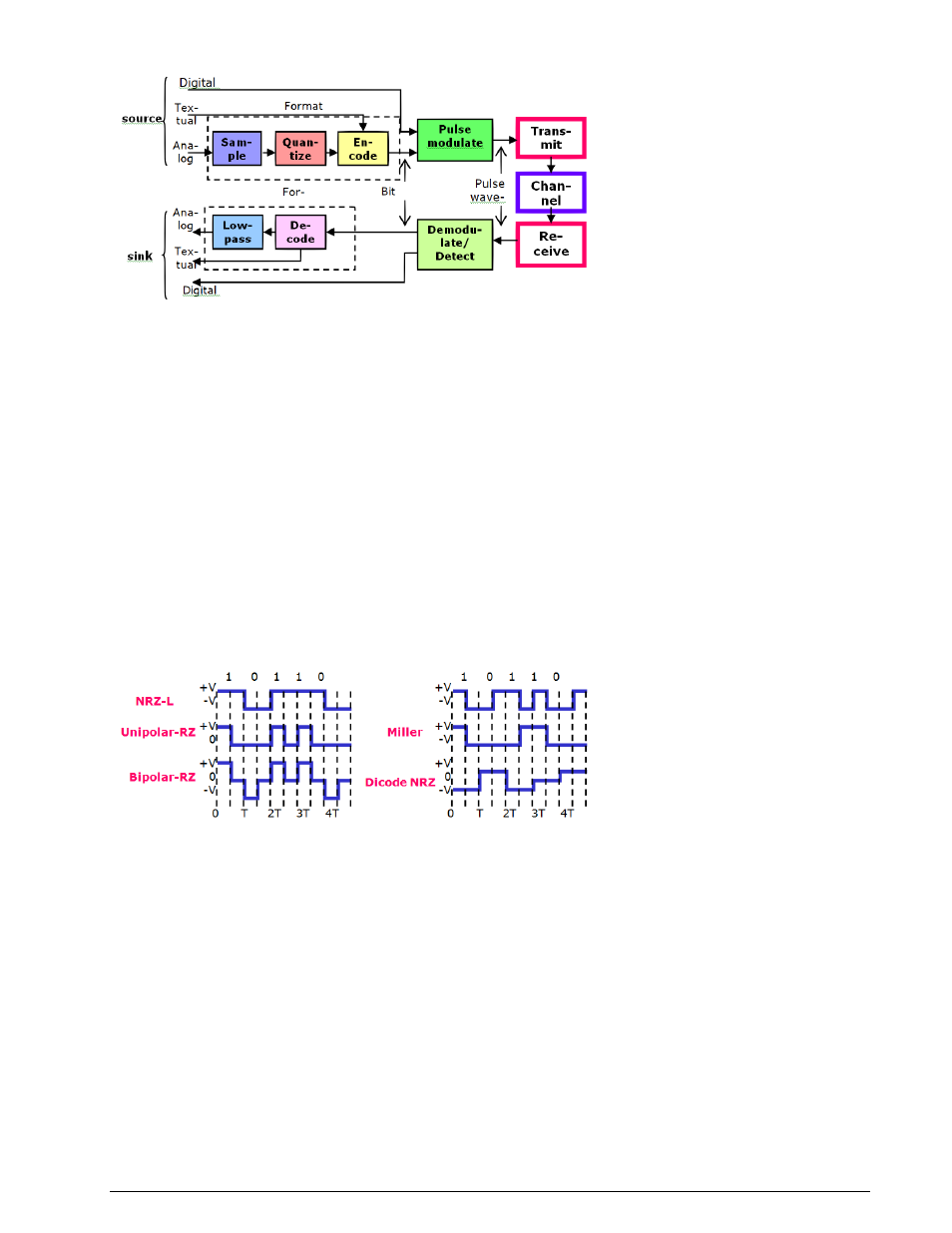Wavecom W61PC V7.5.0 User Manual
Page 107

WAVECOM Decoder W61PC/LAN Manual V7.5
Fundamentals of Radio Data Transmission
97
An example of source coding for analogue input is the process of transforming analogue voice to digital
bits by way of sampling the input signal, quantizing it into discrete amplitude levels, and finally converting
the quantized signal into 8-bit data words. This process is used for the conversion of ordinary analogue
telephone speech into standard PCM (Pulse Coded Modulation) digital signals used globally in the Public
Switched Telephone Network. Other examples for voice coding are the coding used for GSM mobile tele-
phones, or LPC (Linear Predictive Coding) used for narrow band digital voice.
To reduce redundancy, i.e. to use the transmission medium more efficiently, the formatted data is further
processed through compression. As we saw above some codes, e.g. the Morse code inherently has the
ability by statistical observation of the source data to reduce redundancy. Statistical reduction is also the
basis for Huffman coding used in fax communication where the most frequently occurring bit combinations
are transformed into symbols having the lowest number of bits. Huffman coding is thus an example of
variable-length coding.
The degree of compression achievable, the compression ratio, is related to the properties of the data to
be compressed.
Other examples of compression codes are ARJ, Lempel-Ziv, JPEG and MPEG, the later ones used for video,
voice and music compression.
PACTOR and G-TOR are examples of the use of redundancy removal source coding for radio communica-
tion.
Baseband waveforms can be formatted in various ways. The most common method is called Non-Return-
To-Zero (NRZ-L) meaning that the bits will have one of two voltage levels. NRZ-M also called differen-
tial encoding, uses a change in level for a logical one and no change for a logical 0. NRZ-S is comple-
mentary to NRZ-M. Unipolar-RZ represents a logical 1 with a positive half-bit wide pulse and a logical 0
with no pulse, i.e. at 0 level. Bipolar-RZ has opposite half-bit wide pulses for 1 and 0. The Manchester
code or Biphase-φ-L is a subtype of NRZ coding and has a level transition at mid pulse, negative going
for 1s and positive going for 0s. Differential Manchester omits the level transition for 1s and 0s respec-
tively.
The exact waveform to be used depends on the application. For instance systems needing self-clocking
would use Manchester coding because of transitions are always available even if the transmission consists
of long rows of succeeding 1s or 0s. The BBC radio data system used on long wave utilizes Manchester
coding as does Ethernet LANs. The AIS system used on VHF uses differential encoding to resolve polarity
ambiguity and this encoding form is also commonly used in satellite transmission systems.
The illustration below depicts spectral density, i.e. efficiency, as a function of pulse bandwidth.